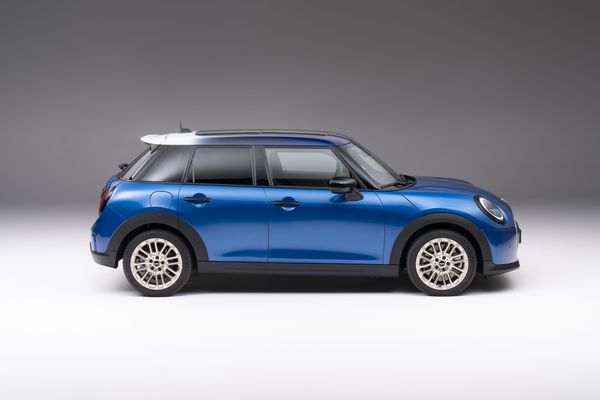SOME weeks ago we published an article about dashcam MOT failures and since then I have been asked a lot about other issues that mean an MOT failure.
Of the roughly one million tests carried out each year in the north, nearly a third of cars fail first time. The most common reason is faults with lights, indicators or other electrical components, followed by suspension issues, braking systems, worn or damaged tyres, body and or chassis rot, reduced driver’s view, noise, exhaust emissions, fluid leaks, followed by steering, seatbelts, vehicle identification and wheels. When it comes to defects, testers rate brakes and tyres top of their list of areas of concern. Now if you’re not mechanically minded, there are things you cannot check, but here are some of things you can.
First things first – clean your car inside and out. Get the underbody steam-cleaned, you will get on the wrong side of the tester if you turn up with a dirty car. Trust me, a clean car helps. A tester will particularly take umbrage if he’s standing under the car trying to work his way through a mud- and dirt-caked undercarriage. Take time to click all seatbelts into their fixings so that the tester can see they work and make sure your rear-view and passenger side door mirrors are fully functional. At the front of the car, check your sidelights, main beam, dipped lights, indicator and foglights. At the rear, check the side, brake, indicator, reversing, number plate and rear fog lights. If any are not functioning, replace immediately.
The alignment of your lights is important but without an alignment checker, you can only do a basic check. Place your vehicle about six feet from a garage door or wall, and when main beam is on, the lights should strike roughly level with the car bonnet and level with and equidistant from each other. Whilst we are on electrics, make sure there are no warning lights illuminated in the dash and if there are check your handbook for what they are and take action; check that Make sure all tyres have a minimum of 1.6mm tread depth and check for cracks or bulges in the side an. Check your wheels have no buckles or bends.
Regarding suspension and brakes, there is not much the ordinary Jo can do to check before the test, but do check brake fluid level and ensure there is a good firm brake pedal and have any knocking noises from the suspension checked. It’s difficult to check the underside of the car without a ramp but do your best, making sure the vehicle is on a flat surface and the handbrake firmly on . Finally, if your exhaust is noisy, consider a new one before the test.
If all the above is ok, you have a decent chance to pass, but the test is extensive and tough. Good luck.
Sporty Astra hybrid packs a punch
BRANDING: The new Astra GSe plug-in hybrid
PLUG-IN hybrid power comes to new GSe versions of Vauxhall’s family hatch and estate, with 222bhp on tap. Vauxhall has revealed the first cars to wear the new sporty GSe branding with hot versions of the Astra five-door family hatch and Sports Tourer estate.
Both models will feature more powerful plug-in hybrid powertrains than the regular Astra line-up, along with some visual and performance tweaks. GSe (Grand Sport electric) is Vauxhall’s newest performance sub-brand, taking over from the VXR line of hot vehicles.
Powering the GSe models is fundamentally the same 1.6-litre turbocharged four-cylinder petrol engine and electric motor system that’s employed in the Hybrid 180 cars. However, total system output is up to 222bhp equivalent. Vauxhall has not yet revealed performance figures, but with its eight-speed automatic transmission (the only option) the Astra GSe hatch should offer a 0-62mph time in the region of 7.5 seconds and a top speed of around 145mph in five-door hatch form.
Fuel consumption stands at a claimed 235.4 to 256.8mpg depending on spec. Vauxhall hasn’t released details on the car’s electric-only range but expect up to 40 miles. Given the battery is the same size as the regular Astra Hybrid 180, charging will take three hours and 30 minutes with the standard charger but it’s likely a 7kW charger will be offered as an option, cutting this to one hour and 55 minutes.
GSe models will feel sportier thanks to a bespoke chassis set-up, with a 10mm lower ride height and recalibrated steering. Uprated suspension will improve wheel and body control characteristics whilst improving comfort. The GSe treatment sees the Astra undergo a performance makeover, with exclusive design touches that include 18-inch alloy wheels and Alcantara sport seats. There’s a new, more aggressive front bumper design while GSe badging completes the look. It’s expected that the brand’s Grandland SUV will also receive the GSe treatment in time, too, following the Astra. The all-new Astra GSe and Astra Sports Tourer GSe are ideal cars for launching Vauxhall’s new sporty branding, offering sporty styling, enhanced driving performance and all the benefits of an electrified powertrain.
Pricing is yet to be revealed but the five-door hatch is likely to start from just under £40,000, with the Sports Tourer estate costing an extra £1,200 when the cars go on sale later this year.
Deliveries will begin in early 2023.








